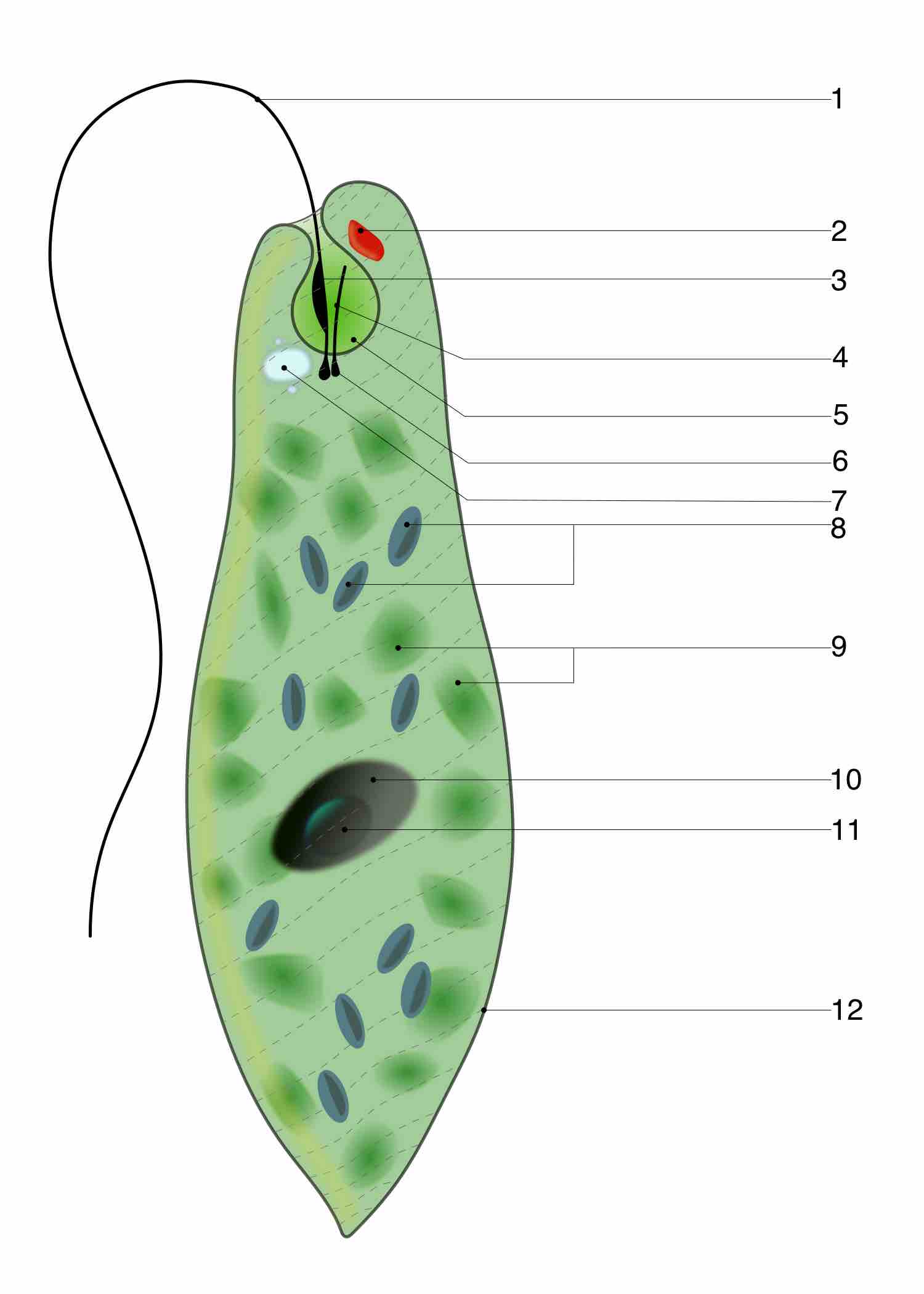Contractile Vacuoles in Microorganisms
A contractile vacuole (CV) is an organelle, or sub-cellular structure, that is involved in osmoregulation and waste removal . Previously, a CV was known as a pulsatile or pulsating vacuole. CVs should not be confused with vacuoles which store food or water. A CV is found predominantly in protists and in unicellular algae. In freshwater environments, the concentration of solutes inside the cell is higher than outside the cell. Under these conditions, water flows from the environment into the cell by osmosis. Thus, the CV acts as a protective mechanism against cellular expansion (and possibly explosion) from too much water; it expels excess water from the cell by contracting. However, not all species that possess a CV are freshwater organisms; some marine and soil microorganisms also have a CV. The CV is predominant in species that do not have a cell wall, but there are exceptions. Through the process of evolution, the CV was mostly eliminated in multicellular organisms; however it still exists in the unicellular stage of several multicellular fungi and in several types of cells in sponges, including amoebocytes, pinacocytes, and choanocytes.

Contractile vacuole of Euglena
Structure of Euglena: 1 - Flagellum; 2 - Eye spot / Pigment spot / Stigma; 3 - Photoreceptor; 4 - Short second flagellum; 5 - Reservoir; 6 - Basal body; 7 - Contractile vacuole; 8 - Paramylon granule; 9 - Chloroplasts; 10 - Nucleus; 11 - Nucleolus; 12 - Pellicle
The CV's phases of collecting water (expansion) and expelling water (contraction) are periodical. One cycle takes several seconds, depending on the species and the environment's osmolarity. The stage in which water flows into the CV is called diastole. The contraction of the CV and the expulsion of water from the cell is called systole. Water always flows from outside the cell into the cytoplasm; and only then from the cytoplasm into the CV. Species that possess a CV always use it, even in very hypertonic (high concentration of solutes) environments, since the cell tends to adjust its cytoplasm to become even more hyperosmotic (hypertonic) than the environment. The amount of water expelled from the cell and the rate of contraction are related to the osmolarity of the environment. In hyperosmotic environments, less water will be expelled and the contraction cycle will be longer.
The number of CVs per cell varies, depending on the species. Amoeba have one; Dictyostelium discoideum, Paramecium aurelia, and Chlamydomonas reinhardtii have two; and giant amoeba, such as Chaos carolinensis, have many. In some unicellular eukaryotic organisms (e.g., amoeba), cellular wastes, such as ammonia and excess water, are excreted by exocytosis as the contractile vacuoles merge with the cell membrane, expelling wastes into the environment. In Paramecium, which, presumably, has the most-complex and highly-evolved CV, the vacuole is surrounded by several canals, which absorb water by osmosis from the cytoplasm. After the canals fill with water, it is pumped into the vacuole. When the vacuole is full, it expels the water through a pore in the cytoplasm that can be opened and closed.